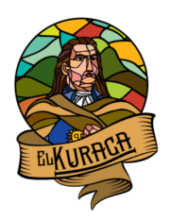The Dream Journey
The origins of Cusco are lost in the night of time. Archaeological excavations let us know that the Cusco valley (except its bottom, then marshy) was already inhabited by primitive settlers about three millennia ago, it has documented information of the cultures of Chanapata and Marcavalle, their constructions even served as a base for the temples Inkas as the Qoricancha or Temple of the Sun.
There are many legends about the origin of Tawantinsuyo, one of them tells that around the twelfth century, emerged from the waters of Lake Titicaca, Manco Capac and his sister and wife Mama Ocllo, demigods and children of Father Inti (the Sun God), with the mission of founding a new kingdom that will improve the living conditions of the peoples.
Manco Cápac and Mama Ocllo would have to walk until they found a place on the ground where the great golden scepter carried by Manco Cápac sank, they walked to the north and reached Pacárec Tampu (Pacaritambo) where they rested in a small cave; at dawn they continued north until they reached Cerro Huanacaure and there the scepter sank, and founded the city of Cusco (Quechua: the navel of the world).
The certain thing is that the cultures of the Altiplano like Wari and Tiahuanaco had great influence in the Inka Culture, the first settlers formed the Hanan Cusco with agricultural technology and more developed architecture. Inhabitants of other regions aware of the events folded, and thus began the Tahuantisuyo, the great empire of the Incas, whose boundaries, after 14 successors of royal lineage, reached Colombia to the north, and the north of Chile and Argentina by the South; As capital the city of Cusco reached its maximum splendor.
Of the first Incas little is known more than names and legends being called Mythic Inkas, more information has been left to us from Pachacútec (the one that removes the earth) (1448-1471), the great conqueror, who also transformed Cusco, reconstructing it, most of the aqueological monuments that we know today in Cusco were his work; his son Tupac Llupanki was a great conqueror, his grandson Waynacapac gave splendor to the empire, his great grandchildren Huáscar and Atahuallpa, they engaged in internal struggles until the arrival of the Spaniards and occupied the city in 1533, thanks to the support of the peoples dominated by the Inkas, who saw in the Spaniards their liberators, being finally subdued also by the Spanish crown.
In this time Cusco was a city of admirable architecture in stone with wide squares, great temples and palaces decorated with abundant pieces of gold. Many of these colossal constructions have remained for eternity.
The Spanish Cusco is based on the foundations of the Inca walls and the outline of its streets, many buildings, churches were built, and a flourishing art school was founded (XVII - XVIII century), represented by numerous painters and craftsmen (paintings of the Cusqueña School, pulpit of San Blas, custody of the Cathedral and of La Merced Church, etc.). The Andean Hispanic cultural fusion has determined very special characteristics in its architecture and population, a city of incomparable beauty in the world, which proudly preserves its customs and traditions, while progressively incorporating itself into modernity.
To this is added the privileged geographical scenery, of beautiful landscapes, in which it has developed. Cusco is the most visited tourist destination in Peru, and the wealth of attractions in the city and its surroundings, as well as the Lost City of the Incas, Machu Picchu, make it one of the main tourist attractions in the world, and offer an excellent quality of tourist services.



